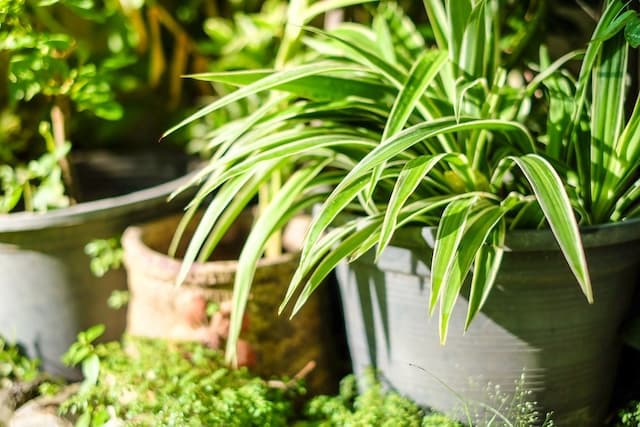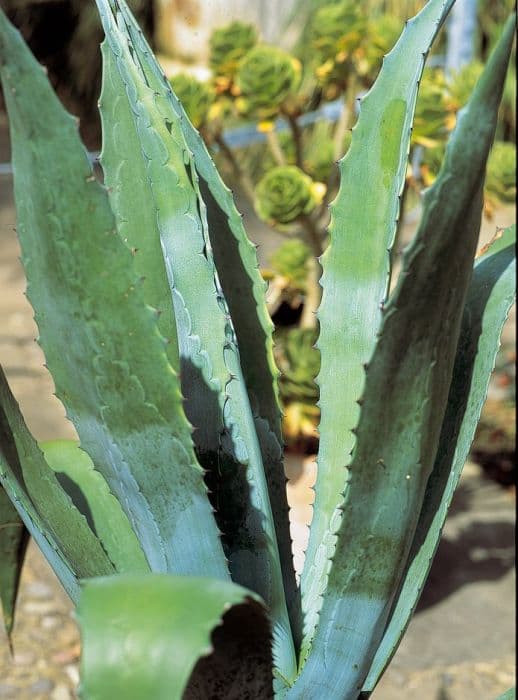Hyacinth Hyacinthus orientalis 'Minos'

ABOUT
Hyacinthus orientalis 'Minos', commonly known as hyacinth, is a bulbous perennial prized for its highly fragrant flowers. The 'Minos' variety showcases sturdy flower spikes densely packed with star-shaped blossoms that give it a lush, full appearance. The flowers come in a striking hue that can vary slightly depending on the cultivar, and they unfold in a tubular shape that opens to flared edges. Each individual floret is neatly arranged around the central stem, creating an impressive display of color. The leaves of the hyacinth 'Minos' are linear and glossy, forming a basal clump that elegantly contrasts the upright floral stalks. The foliage is a rich green color which provides a beautiful backdrop for the vibrant blooms. Despite the absence of size descriptions, it's clear that this plant's compact form is well suited for a range of garden settings or container displays, where it adds a pop of color and fragrance to the spring landscape. The appearance of the hyacinth 'Minos' is both striking and refined, making it a beloved choice for gardeners and floral enthusiasts alike.
About this plant
 Names
NamesFamily
Asparagaceae.
Synonyms
Common Hyacinth, Garden Hyacinth, Dutch Hyacinth.
Common names
Hyacinthus orientalis 'Minos'.
 Toxicity
ToxicityTo humans
Hyacinth, including the 'Minos' variety, contains allergenic lactones and other potentially toxic compounds, particularly in its bulbs. If ingested, hyacinth bulbs can cause severe stomach upset, nausea, vomiting, and diarrhea. Handling the bulbs may also cause skin irritation or allergic reactions due to the oxalic acid and other compounds present. Ingesting any part of the plant has the potential to lead to symptoms of poisoning, though serious complications or fatalities are rare.
To pets
Hyacinth, also termed 'Minos' in this variant, is toxic to pets, including both cats and dogs. All parts of the plant contain harmful compounds, but the bulbs are particularly toxic. If a pet ingests hyacinth, they may exhibit symptoms such as vomiting, diarrhea, drooling, and abdominal pain. In more severe cases, ingestion can lead to depression of the central nervous system, increased heart rate, and changes in respiration. Immediate veterinary attention is advised if a pet has consumed any part of a hyacinth plant.
 Characteristics
CharacteristicsLife cycle
Perennials
Foliage type
Deciduous
Color of leaves
Green
Flower color
Purple
Height
6-12 inches (15-30 cm)
Spread
3-6 inches (7.5-15 cm)
Plant type
Bulb
Hardiness zones
3-9
Native area
Mediterranean
Benefits
 General Benefits
General Benefits- Aesthetic Appeal: Hyacinth 'Minos' is known for its striking blooms that add color and beauty to gardens and landscapes.
- Fragrance: The flowers emit a strong and pleasant fragrance, which can enhance the sensory experience of any space where they are planted.
- Attracts Pollinators: The plant attracts bees and other pollinators, supporting the health of the local ecosystem.
- Easy to Grow: Hyacinth 'Minos' is relatively easy to cultivate and can be grown in pots or in the ground, making it accessible for many gardeners.
- Spring Blooming: As a spring-blooming plant, it provides early seasonal color when many other plants have not yet started to flower.
- Forced Blooms: Hyacinth 'Minos' can be "forced" to bloom indoors during the winter for an early touch of spring.
- Compact Size: Its compact growth habit makes it suitable for small gardens or for growing in containers on patios or balconies.
 Medical Properties
Medical PropertiesThis plant is not used for medical purposes.
 Air-purifying Qualities
Air-purifying QualitiesThis plant is not specifically known for air purifying qualities.
 Other Uses
Other Uses- Hyacinth 'Minos' petals can be used to create natural dyes for fabrics, providing a range of beautiful and subtle colors.
- The bulbs of hyacinth can be forced in a specialized vase known as a "hyacinth glass," which allows for indoor blooming and decorative display.
- Dried hyacinth flowers can be incorporated into potpourri mixtures to add fragrance and beauty to a room.
- Hyacinth flowers can be used in a flower press to create dried flower arrangements or for botanical art projects.
- Inculcated in candle making, the scent of hyacinth flowers can be captured in wax to create aromatic hyacinth-scented candles.
- Hyacinth flowers are sometimes used in perfumery, though it is not as common as other flowers, for their sweet, floral fragrance.
- As a part of a floral arrangement, hyacinth flowers can also be used to convey a message in the language of flowers, symbolizing playfulness or sport.
- During the Victorian era, hyacinth bulbs were exchanged as gifts with coded messages based on the color of the flowers, as part of floriography.
- Hyacinth floral water, made by steeping the petals in water, can be used for face washing or as a refreshing linen spray.
- The strong fragrance of hyacinth flowers can be used to deter small rodents from gardens or storage areas without the use of chemicals.
Interesting Facts
 Feng Shui
Feng ShuiHyacinth is not used in Feng Shui practice.
 Zodiac Sign Compitability
Zodiac Sign CompitabilityHyacinth is not used in astrology practice.
 Plant Symbolism
Plant Symbolism- Rebirth: Hyacinth, often associated with spring, symbolizes new beginnings and rejuvenation since it is one of the first flowers to bloom in the season.
- Constancy: The perennial nature of the hyacinth represents constancy and reliability, blooming consistently every year.
- Beauty: With its rich colors and enchanting fragrance, the hyacinth symbolizes natural beauty.
- Playfulness: The range of colors and the shape of its flowers give hyacinths a playful aspect, signifying fun and sportiness.
- Jealousy: In Greek mythology, the hyacinth sprang from the blood of Hyacinthus, a youth whom both Apollo and Zephyr loved. Zephyr's jealousy led to Hyacinthus's death, imbuing the flower with this symbolic meaning.
- Sorrow: The association with the myth of Hyacinthus also imbues the flower with a symbol of sorrow for lost love.
 Water
WaterHyacinth bulbs require consistent moisture during their active growth period. Water the Hyacinthus orientalis 'Minos' when the top inch of soil feels dry. Thoroughly soak the soil until water runs out of the bottom of the container, which could mean using up to 1 gallon of water for larger pots. During their blooming period in spring, they may need to be watered once or twice a week, depending on the weather. After blooming, reduce watering frequency as the leaves begin to yellow and die back, signaling the bulb is entering dormancy.
 Light
LightHyacinthus orientalis 'Minos' thrives best in full sunlight, so position them where they will receive at least 6 hours of direct sunlight daily. They can tolerate light shade, but too little light may result in weak, floppy stems and fewer flowers. A southern-facing windowsill or a spot in the garden that gets ample sunshine is ideal for these bulbs.
 Temperature
TemperatureHyacinths, including Hyacinthus orientalis 'Minos', prefer cooler temperatures, thriving in a range between 60°F to 70°F during the day and cooler at night, around 55°F. They can tolerate temperatures as low as 20°F for short periods, which is important for the initiation of flower buds, but should not be subjected to prolonged severe freezes. The ideal temperatures facilitate healthy growth and vibrant blooms.
 Pruning
PruningPrune Hyacinthus orientalis 'Minos' after the flowers have faded by cutting back the flower stems to prevent the plant from expending energy on seed production. Leave the foliage in place until it has died back naturally, as this is when the bulb gathers energy for the next flowering season. Pruning is generally done once a year, post bloom.
 Cleaning
CleaningAs needed
 Soil
SoilThe best soil mix for Hyacinth (Hyacinthus orientalis 'Minos') should be fertile, well-draining, and have a pH that is slightly acidic to neutral, between 6.0 and 7.0. A mixture of loamy garden soil, peat, and sand or perlite can provide the necessary drainage and nutrient retention. Adding compost to the mix will also enrich the soil and promote healthy growth.
 Life cycle
Life cycleThe life cycle of Hyacinth 'Minos' starts with bulb planting in the fall, as these bulbs require a period of cold to stimulate growth. During the late winter to early spring, shoots emerge from the soil, developing into sturdy stems with strap-like leaves. The stem then produces a dense spike of fragrant flowers that bloom in spring, presenting in a variety of colors from purple, pink to white. After flowering, the plant enters a period of photosynthesis where the leaves gather energy which is stored in the bulb for the next growing season. As summer approaches, the foliage yellows and withers as the plant goes dormant, during which time the bulb rests underground. In the next growth cycle, the bulb can produce offsets, or "daughter bulbs," which can be separated and planted to propagate new plants.
 Propogation
PropogationPropogation time
Spring
The most popular method for propagating Hyacinth 'Minos', commonly referred to as the common hyacinth, is through bulb division. This is typically done in late summer when the foliage has died back. The mature bulbs are carefully dug up and the offsets, which are smaller bulbs that form at the base of the parent bulb, are separated. These offsets can be replanted immediately or stored in a cool, dry place until the autumn planting period. It is vital to ensure that the offsets have a portion of the basal plate to facilitate the development of roots. When replanting, the bulbs should be positioned around 6 inches (approximately 15 centimeters) deep and spaced about 4 inches (around 10 centimeters) apart in well-drained soil with adequate sunlight.









